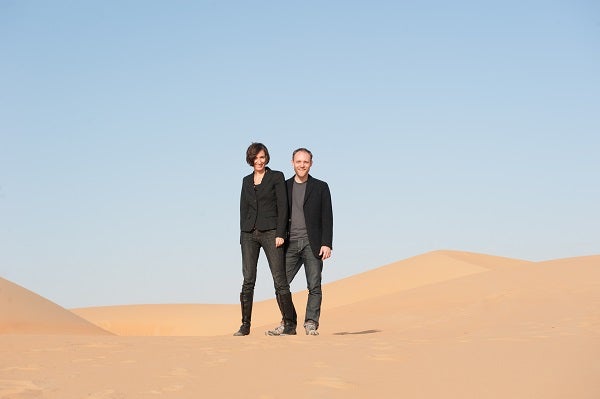Digital Culture Speaker Series Presentation: Land Art Generator Initiative

Land Art Generator Initiative:
The Aesthetic Influence of Renewable Energy Infrastructures on Public Space
Starting from the assumption that a transition to 100 percent renewable energy will happen over the coming generations (and no time too soon), we will inevitably begin to see a greater proliferation of clean-energy generation infrastructures within urban and suburban environments. Embracing this fact, the time is now to proactively address the influence of these new machines on city planning, urban design, zoning ordinances and building codes. When envisioning cities of the future, we would like to imagine potential futures in which the aesthetic influence of clean-energy technologies has been intentionally designed into a well-planned city, rather than a future in which utilitarian devices have been affixed to surfaces as an afterthought.
The Land Art Generator Initiative (LAGI) is leading the global conversation on the shifting aesthetics of sustainable infrastructure. Recent trends in public acceptance of renewable energy have shown that resistance to a transition from fossil fuel dependence often takes refuge in arguments that hinge on questions of aesthetics. Meanwhile, the “gloom and doom” narrative of climate activism (rising sea levels, increasing storm intensities, coral bleaching, mass extinction, desertification), while based in scientific fact, can sometimes be polarizing to effective political change.
By presenting examples of utility-scale renewable energy infrastructures as public art, LAGI is helping to inspire the general public about the beauty of our sustainable future, and showing policy makers and city planners that net-positive energy installations can be place-making tools, economic development drivers, and educational venues while they help to power the grid.
The presentation will show how interdisciplinary collaboration is playing an important role in defining the design influence of renewable energy on our constructed environments and point out the reciprocal role of society in defining the aesthetics of renewable-energy infrastructure itself.
Bios:
Elizabeth Monoian and Robert Ferry are the founding co-directors the Land Art Generator Initiative.
Their publications include Regenerative Infrastructures, The Time is Now: Public Art of the Sustainable City, New Energies, and A Field Guide to Renewable Energy Generation.
They are the recipients of multiple National Endowment for the Arts grants and have been awarded the J.M.K. Innovation Prize, a program of the J.M. Kaplan Fund.
Monoian is an interdisciplinary artist and designer currently working on large-scale international public art projects that both address and expose models of environmental sustainability. Her work has been screened and exhibited in venues throughout Europe, the Middle East and the United States. She is the founder and director of Society for Cultural Exchange, a non-profit organization that is developing international exchanges between communities, academics and artists. She holds an MFA from Carnegie Mellon University.
Ferry (AIA, LEED AP BD+C) is an architect with two decades of professional experience. His practice is focused on the design of net-zero and net-positive places that achieve harmony with their local and global environments and with the people who use them. He has contributed to many green building projects around the world, and his net-positive design work has been featured in Popular Science Magazine and other publications.

